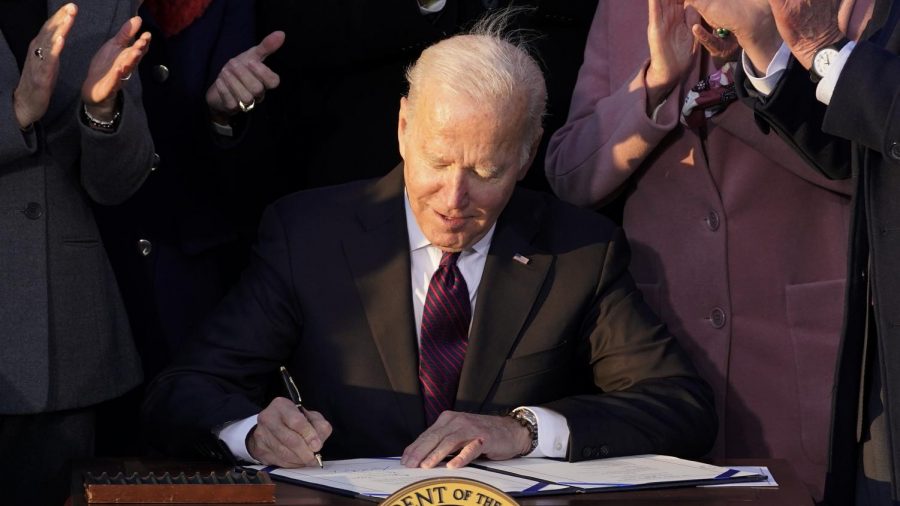Biden’s Infrastructure Plan
November 23, 2021
Last Monday, while us Priory students were enjoying a day off after exams, President Joe Biden signed a $1.2 trillion dollar infrastructure bill to begin an overhaul of the nation’s bridges, roads, public transit system, and more. The infrastructure bill received limited bipartisan support with 13 Republicans voting in favor of the bill while 6 Democrats voted against it, leaving the final vote at 228 – 206. The bill focuses mainly on physical infrastructure, such as water systems, sewage systems, and bridge building. The bill approves a total of $550 billion in new spending, with the rest of the money coming from previously approved funds.
Two questions are immediately apparent: where exactly is this money going, and how will it affect the American quality of life? The bill dedicates the most amount of money ($110 billion) for use in road and bridge repair as well as construction with a focus on climate change reduction. It also authorizes $105 billion for use in improving public transit, $73 billion to be put towards power infrastructure, and $65 billion for improving the nation’s high-speed internet. Other notable investments include $55 billion towards clean drinking water systems, $50 billion towards preparing infrastructure for the effects of climate change and cyber attacks, $25 billion for the improvement of airports, and $65 billion in other programs such as dealing with environmental changes.
These investments will work wonders for the nation’s stability, but so far it does not seem to impact the average citizen’s daily life much. This bill, however, is only the first step in a two-part infrastructure plan developed by the Biden administration. The next step, titled the Build Back Better Act, is much larger, costing $1.85 trillion. This legislation, if enacted, will have a great effect on the daily lives of many Americans. This bill plans to invest a total of $555 billion in cutting down greenhouse gas emission and overall climate improvement. It also plans to put down $400 billion towards the child care and preschool systems, expanding access to free preschool and making childcare more affordable for an estimated 20 million children. The bill also lays out $200 billion to prolong the American Rescue Plan’s expanded Child Tax Credit for an additional year, allowing about 35 million families up to $3,600 in tax cuts for each child who qualifies. The plan also invests $300 billion in housing and home care as well as significant investments in affordable healthcare, immigration, equity, expanded access to affordable higher education, and financial assistance to Americans with hearing issues.
The Biden Administration plans to fund these two bills, totaling over $3 trillion, by increasing taxes on those who make over $400,000 a year. This includes a surcharge on individuals or estates with an AGI (gross income) of over $10 million as well as an additional surcharge on taxpayers with AGIs over $25 million. $250 billion in unspent Covid relief funds and other pre-existing funds will also support this legislation.
